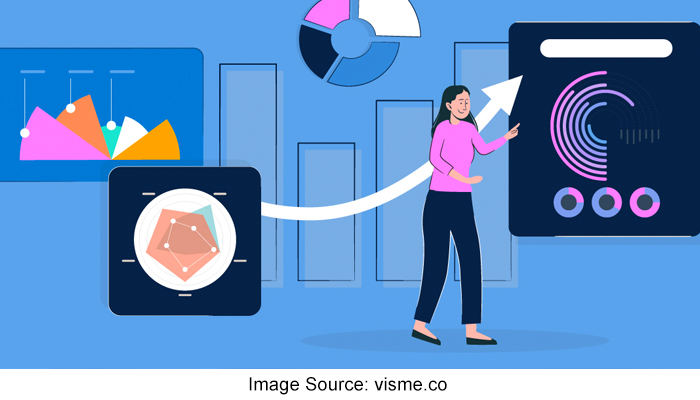In today’s fast-moving data world, knowing how to show data clearly is vital for anyone in data work. Learning data visualization is crucial for beginners, especially those taking a Data Analyst Course in Delhi. It helps them understand and share large amounts of data quickly. This guide is made to help starters turn complex data into simple, insightful pictures.
Understanding Data Visualization
Data visualization is about showing data with pictures like charts, graphs, and maps. These pictures help us see and get trends, odd data points, and patterns quickly. For students doing a Data Analyst Course, it’s essential to learn this to work well with big data sets and make intelligent choices based on data.
Why Data Visualization Matters
Data visualization is more than making data look nice. It’s critical for understanding complex data better and making good decisions. For Data Analyst Course students, being good at data visualization lets them scan data and share what they find clearly and effectively.
How to Start with Data Visualization
For newbies, getting into data visualisation starts with a few basics:
Picking the Right Chart:
The kind of data you have and the story you want to tell will decide which chart to use. Bar charts, line graphs, pie charts, and scatter plots are common choices, each showing data differently.
Knowing Your Data:
Before making visuals, you must understand your data. This means knowing what kinds of data you have and what you want to learn from it. This step is critical to ensure your visuals show what’s happening in your data.
Best Practices for Data Visualization
Taking a Data Analyst Course in Delhi teaches good practices for making data visuals, such as:
Keep It Clear and Simple:
The main aim is to make data accessible. Avoid too much detail and choose simple, clear pictures that tell your data’s story well.
Innovative Use of Color:
Colors should help make your visual more transparent, not more confusing. Use colours to point out, separate, or group parts of your data.
Stay Consistent:
Keeping your design elements like fonts, colours, and layout the same makes your visuals easier to get and compare.
Be Accurate:
Your visuals must show your data truthfully. This means using the correct scale and labels and not twisting the data’s natural shape.
Exploring Data Visualization: Techniques and Tools
Digging into the world of data visualisation opens up a lot of ways and tools that help share complex information. This is useful for students and people working in data analysis because it adds more skills to their work.
Diverse Visualization Techniques
Knowing and using various ways to show data is critical for any data analyst. Each way is unique and helps show different parts of the data:
Comparative Visualizations:
Using bar charts and radar charts helps compare different pieces of data. It is excellent for showing how things are other between groups or over time.
Distribution Visualizations:
Box plots and histograms are good for showing how data is spread out. This helps analysts see the range, middle point, and outstanding data.
Trend Visualizations:
Line graphs and area charts are best for seeing changes over time. This is important for finding trends or patterns in data.
Relationship Visualizations:
Scatter plots and bubble charts show how things relate, pointing out connections or possible causes.
People learning data analysis can share their findings better by adding these ways to their skills.
Choosing the Right Tools
There are many tools for visualization, each with its benefits. For those learning data analysis, knowing these tools makes them better analysts and ready for different tasks:
Tableau:
Known for being easy to use and powerful in making visuals. It’s suitable for big data sets and complex data work.
Microsoft Power BI:
Part of Microsoft’s tools, Power BI is vital for making interactive reports and dashboards. It works well with Excel and other Microsoft products.
Python Libraries (Matplotlib, Seaborn, Plotly):
For those who like coding, Python has libraries for making visuals. Matplotlib and Seaborn are for still images, while Plotly does interactive visuals.
R and ggplot2:
R is a programming language for stats and data work. ggplot2 is a library in R for making detailed graphics.
Learning these tools helps data analysis students prepare for many different kinds of data work.
Final Thoughts
Starting with data visualization can seem big and tricky. Still, it becomes an essential skill with the right tools and methods. For those learning in a Data Analyst Course in Delhi, getting good at data visualization improves their analysis skills. It opens new ways to look at and talk about data insights.
For anyone new to data analysis, remember that data visualization is not just about making charts and graphs. It’s a powerful way to tell the stories hidden in your data.
ExcelR – Data Science, Data Analyst, Business Analyst Course Training in Delhi
Address: M 130-131, Inside ABL Work Space, Second Floor, Connaught Cir, Connaught Place, New Delhi, Delhi 110001
Phone: 09632156744
Business Mail: enquiry@excelr.com

